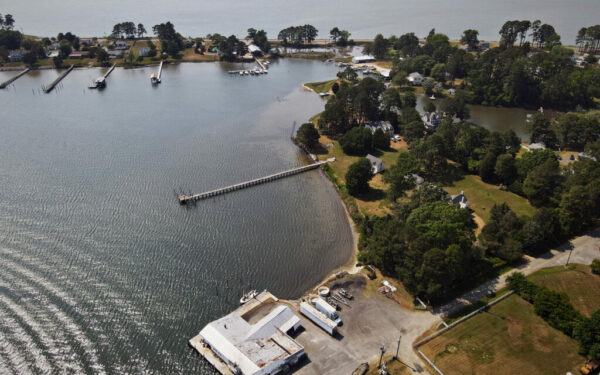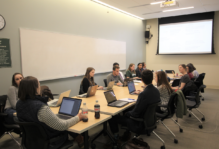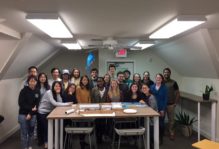Officiating Studies in Coastal Resiliency at William & Mary
By Maryam Jama ’22
During the Spring 2022 semester, I was a Sustainability Ambassador for the Office of Sustainability. I worked with a team of students under the mentorship of four advisors at William & Mary (from the Office of Sustainability, Virginia Institute of Marine Science, and Virginia Coastal Policy Center), to investigate the potential for a sustainability certificate with a focus on coastal resiliency. I learned about the complexities involved in the administrative side of academic certificates through interviewing faculty and administrators, and discovered that the process of creating a certificate—from proposal to welcoming the first batch of students—is quite tedious.
The process begins by defining what kind of certificate the proposed certificate is. There are unofficial certificates that don’t bear any academic credits, like ones you might receive when you complete a workshop. Other certificates act like a professional “badge”, like the ones on LinkedIn. Academic certificates are another category, which are granted by the university and come with a transcript (credit-bearing). There are many types of academic certificates: undergraduate/baccalaureate, graduate, post-professional, post-baccalaureate, and certificate of advanced graduate study. The execution of each type of certificate involves a different process, and each have their own target audience, stakeholders, hierarchy of approval, funds, and other university stipulations.

Sea level rise, hazardous floods, and severe storms due to climate change is an imminent threat to infrastructure stability. Virginia Sea Grant is prioritizing programs designed to improve the efficacy of infrastructure in coastal areas, for example, coastal resiliency programs offered by Virginia universities. Drone footage over Gwynn’s Island on May 26, 2021 (Photo by Aileen Devlin | Virginia Sea Grant)
The student team was responsible for learning about the process to develop each type of certificate. We investigated the post-baccalaureate GIS certificate offered by the William & Mary’s Center for Geospatial Analysis, post-professional and post-graduate certificates offered by the William & Mary School of Education, and the unofficial certificate in Military and Veterans Health, Policy and Advocacy offered by the William & Mary Law School’s Lewis B. Puller, Jr. Veterans Benefits Clinic. Since William & Mary does not offer certificates at the undergraduate level, we investigated the process of creating an interdisciplinary minor, because coastal resiliency is an interdisciplinary topic by nature.
Through this experience, I learned that there are many pieces that come together and administrative hurdles to overcome to execute a certificate like this. Considering delivery options (remote vs. hybrid vs. in-person), determining the department in which the certificate would be housed, selecting the target audience, identifying stakeholders, potentially creating new classes, and getting approval from faculty and higher-up administrative bodies are just some of the reasons why creating a coastal resiliency certificate is difficult. But because of the gravity of climate change and its disastrous effects on water, studies in coastal resiliency is desperately needed to help policymakers and engineers build sustainable and resilient infrastructure for America and around the world.




No comments.
Comments are currently closed. Comments are closed on all posts older than one year, and for those in our archive.